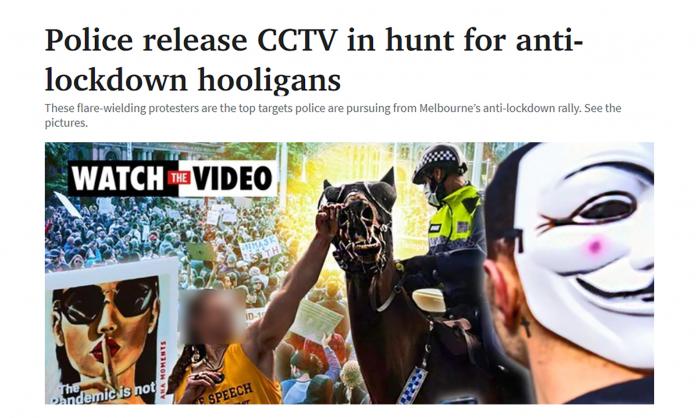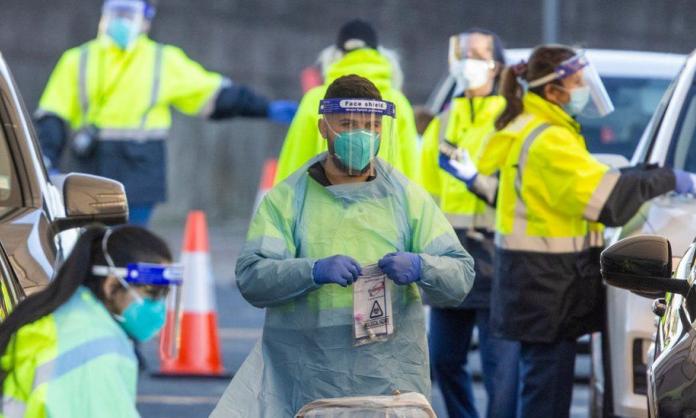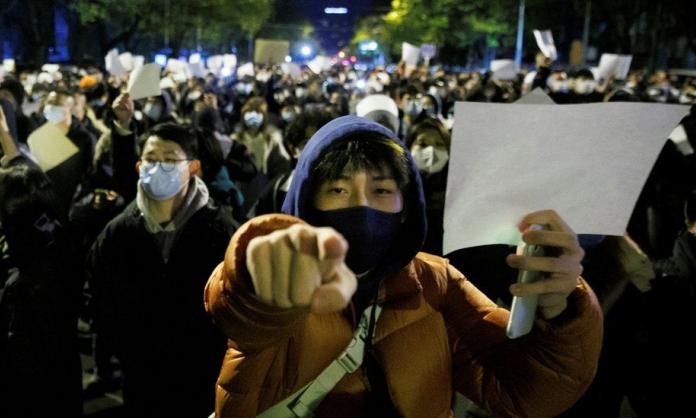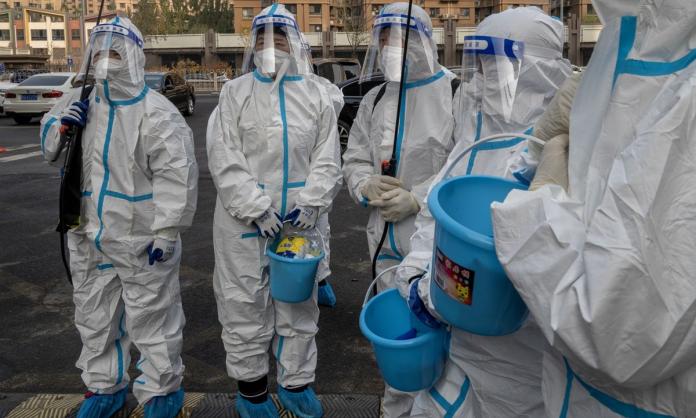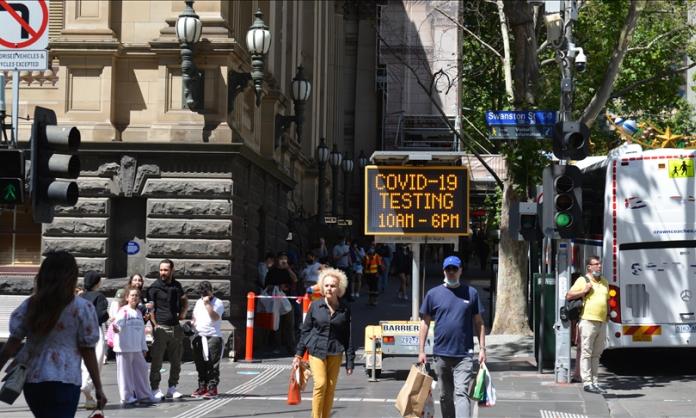The Murdoch press has spent millions over the past year and a half pumping out propaganda against the use of lockdowns as a public health measure. Now, as protests against the lockdowns have gained some real momentum, the Murdoch empire has hypocritically joined calls for police to crackdown on the movement it has done so much to encourage.
After thousands took to the streets on 24 July in Sydney, Melbourne, Adelaide, Brisbane and Wollongong, the media, police and state governments were quick to condemn the ragtag bunch of right-wing conspiracy theorists who helped organise the actions. This included social media figures like Jon-Bernard Kairouz (the “TikTok guy”); prominent anti-lockdown fanatic Romeo Georges; a handful of micro-influencers; and Brady Gunn, who runs “A Stand In The Park”, a seeming cross between an organising page for anti-lockdown protests and a spiritual self-help site for conspiracy theorists.
Also involved was former Survivor contestant Monica Smit, who urged the many followers of her high-profile page Reignite Democracy Australia to attend the Melbourne protest. Smit’s YouTube channel regularly features interviews with hard right independent MP Craig Kelly, who resigned from the Liberal party in February so that he could more forcefully attack the government’s handling of the pandemic. Joel Jammal, who handles some of Craig Kelly’s social media, spoke at the Sydney rally.
Following the Sydney protest, the New South Wales police minister, David Elliott, announced that police were forming a strike force to identify every person who had attended. At the protest itself, 57 people were arrested. A second round of demonstrations was slated for the following Saturday, and so 1,300 police flooded the Sydney CBD in anticipation. Police closed lanes of major roads to stem traffic, and checked over 70,000 vehicles in a successful attempt to prevent the second protest.
The Murdoch press enthusiastically cheered on this crackdown, despite being the unofficial mouthpiece for anti-lockdown sentiment throughout the pandemic. Following the rallies, Melbourne’s Herald Sun ran the headline “the self-indulgent anti-lockdown protesters who brought havoc to Melbourne’s streets”. Sydney’s Daily Telegraph went harder: “Sydney lockdown protests slammed as idiotic and selfish, as half of Australia is in lockdown”. Both papers published the faces of the “most wanted” protest attendees.
In his regular column in the Australian, Peter Hoysted wrote that “the real issue is that these protesters in many instances became subject to the influence of extreme fringe groups for the first time. Many will have fallen into their orbit now ... I keep trying to tell people how serious these fringe groups are and what threats they pose”.
What Hoysted failed to mention was the role the Murdoch press itself has played in generating support for such “extreme fringe groups”. Here’s an exercise: try to guess who wrote the following sentence: “Strict coronavirus lockdowns which have crippled the world’s economy were encouraged by a sophisticated Chinese propaganda effort”. Was it Reignite Democracy Australia’s Monica Smit? No. Was it “TikTok guy” Jon-Bernard Kairouz? No. Maybe an anonymous poster on a Qanon subreddit? Wrong again.
The author of that sentence, and an entire article on how China conned the world into the scam of lockdowns, is James Morrow, the Daily Telegraph’s federal political editor. And there’s much, much more where that came from. During Victoria’s lockdowns, Murdoch’s papers ran countless articles calling for restrictions to be lifted. There’s only room here for some of the highlights: “Coronavirus Victoria: Rage against the regime, end lockdown ‘torture’” demanded a September 2020 headline in the Australian.
Earlier this year, the Weekend Australian headlined an article “Coronavirus lockdown lunacy is frying our minds”. The article’s author, Adam Creighton, argued that “Victoria’s state-wide third lockdown of 6.6 million people is so freakish it raises a worrying possibility ...The west, and Australia and New Zealand in particular, are suffering mass psychogenic illness, where only sociology, psychology and the perverse incentives of large welfare states, can explain the ongoing obsession with COVID-19 and our medieval responses to it after almost a year of improved treatments and new information.” This kind of creative vitriol would have made Creighton a hit speaker at the protests.
The Daily Telegraph’s Tim Blair didn’t stop at attacking the lockdowns, but also gave glib advice to anti-lockdown protesters on how to avoid police repression. “Lockdown protesters should use code”, he wrote, “call it, I don’t know, a ‘Black Lives Matter’ protest or something”.
And they haven’t just targeted lockdowns, but also questioned whether the virus was really a serious issue at all. In April 2020, the Herald Sun published an article by Andrew Bolt under the headline “Flu vs this Covid-19: Why the different policy?” The thrust of the article was that they’re really quite similar don’t-you-know, except that “the flu is far more likely to kill the young”. “Do we really keep these incredibly oppressive and ruinously expensive restrictions on our movement, or do we respond from now on as we do with the flu—and protect the vulnerable rather than lock down everyone?”, Bolt asked.
Business tends to oppose lockdowns, and generally see government efforts to save lives as an unnecessary and inexcusable incursion on their right to make money, because the disruption to the economy causes them to lose profits. See for example the open letter that seven of Australia’s biggest businesses wrote last year calling for the Victorian government to lift its restrictions. They found their most effective mouthpiece in the Murdoch press. But many of Australia’s other mainstream publications, like the Age and the ABC, have also helped out, most often by portraying the anti-lockdown sentiment as more widespread than it really is. ABC coverage, for instance, is saturated with sob-stories from small business owners, as if they are the only people affected by the pandemic.
But it has been the Murdoch press that has been the most irresponsible in drumming-up opposition to the idea that saving lives should be a priority. Its about-turn on its anti-lockdown constituency in response to the recent protests reflects a shift in the bosses’ strategy for reopening the economy, from playing down the threat of the virus to vaccination as the ticket to letting it rip and reopening. Prioritising business over public health is the consistent theme behind the ideological gymnastics that the death-cult Murdoch press is performing.




